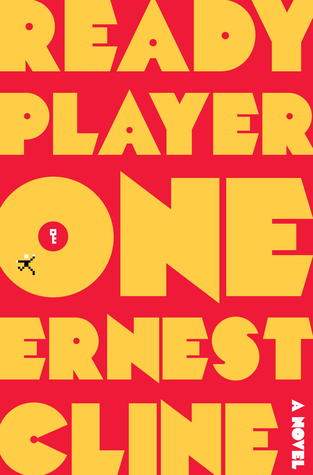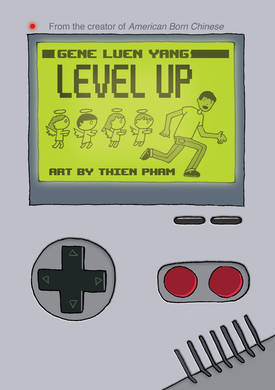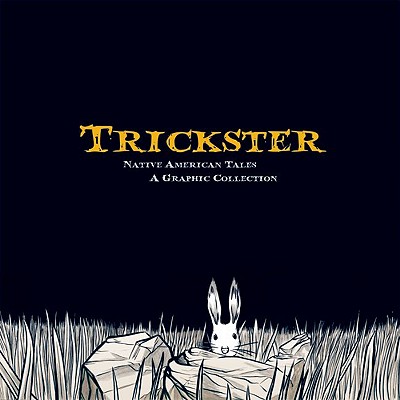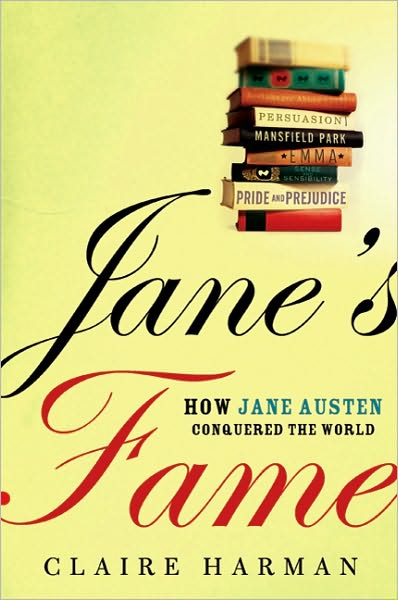Video games: They began as dinky pixelated images where the goal was to eat fruit and run from ghosts (poor old Pac-Man). Now they’re complex, visually stunning stories in which you can fight wars, search for treasure, and build cities. Books that incorporate this changing, challenging technology toy with reality, critique modern society—and afford readers a chance to really, truly, geek-out like crazy.
In the year 2044, the environment and the economy have gone to shit. People are poor, sick, and miserable—except when they’re in the OASIS, a completely immersive online video game where they can be fabulous beauty queens or dragon-slaying wizards. The OASIS provides education, jobs, and alternate lives that are ten times more fulfilling than anything the beat-up, worn-down real world can offer. For teenager Wade Watts, the OASIS is his ultimate escape—because it’s creator, eccentric techno-genius James Halliday, left a treasure hunt embedded in the game that leads to a billion dollar real-world fortune and complete control over the OASIS. Halliday was obsessed with the 1980s, the decade of his youth, and Wade (and the rest of the world) have followed in his footsteps, studying John Hughes movies and Atari video games for clues to Halliday’s “Easter egg.” And when Wade gets to the first clue before anyone else—even the soulless minions from the evil IOI corporation—the world (online and offline) will never be the same. Sweet, funny, clever, and quirky, with a cast of badass (ok, geeky) gamers, ‘80s trivia galore, and a Hollywood movie adaptation already in the works, Ready Player One is, quite simply, a winner.
For the Win by Cory Doctorow, 2010, Tor Books (Young Adult Science Fiction).
The future’s not all fun and games—not for everyone. Sure, people around the world are engrossed in complex, online video games, but the system has been corrupted. Kids work as slave labor for big bosses, farming virtual gold and prizes from the games that are then sold—for a big profit—to rich gamers who can afford to cut corners. Matthew Fong works his virtual magic in poor conditions for small wages so Boss Wing can reap the rewards. Leonard, aka Wei-Dong, stays up all night in L.A. so he can work online with a ragtag team out of China. Mala, known as General Robotwallah, leads an “army” of kids in India through the games under the watchful eyes of Mr. Banerjee. But when any of these skilled young gamers try to strike out for themselves under their own terms, they’re met with threats and violence. Enter Big Sister Nor, a factory-worker-turned-gamer who’s out to lead a worldwide rebellion—online and off—against the bosses and owners. With an international cast of characters whose stories sweep across the globe, For the Win is authentic and exciting. There’s plenty of social commentary here, but this is one thrilling call to action.
The Unidentified by Rae Mariz, 2010, Balzer and Bray (Young Adult Science Fiction).
In the not-too-distant future, education has been taken over by corporations. Malls are converted to Game Centers, and students learn by—you guessed it—shopping. Connected to each other by high-tech digital devices, playing complex video games in a simulated consumer environment, the most popular kids earn the highest Game scores. Katey “Kid” Dade is decidedly not popular; she just wants to make music with her friends and get along with her mother at home. But then Kid’s curiosity is roused when a group calling itself the Unidentified pulls a daring anti-corporate prank. Ironically, Kid’s investigation into this act of rebellion makes her more appealing to the corporations, and soon Kid’s been “branded”—contracted by sponsors as a “trendspotter” who acts as a spokesperson. As Kid longs for her previous anonymity and digs deep into the Unidentified’s secrets, she begins to question the society she belongs to. And as any reader of dystopian fiction knows, shaking up the status quo leads to all kinds of trouble. Compulsively readable and pitch-perfect when it comes to depicting the life of the average high schooler, The Unidentified is a compelling glimpse into a future that’s not so very different from our own technology-dependent lives.
Ender’s Game by Orson Scott Card, 2002, Starscape Books, originally published in 1985 (Science Fiction).
Years ago, an alien race invaded earth—twice. By sheer chance, a single commander of the International Fleet managed to defeat the “buggers.” But humans live in fear that they will attack again, and the International Fleet has spent years developing an intense program to train the next generation of all-star commanders. The students at Battle School are children, little boys and girls who nevertheless possess razor-sharp intellect and an instinct for strategy. The top student is Ender Wiggin, just six years old when he leaves his family. Ender is different, and special. Video games, battle simulations, and a fantasy game with a twisted psychological component—plus isolation, bullying, the knowledge that his failure means the end of life of earth, and an uncanny ability to survive and thrive—turn Ender into the ultimate fighting machine. And though Ender may be the earth’s last and best hope, he’s never been predictable—and the buggers are still out there. Despite Ender’s fierce determination, he’s a sympathetic character who’s never allowed to make any plans for his future or stray from the destiny he’s been chosen for. Smart, suspenseful, and thoughtful, Ender’s Game has become a classic of the science fiction genre.
Level Up by Gene Luen Yang, art by Thien Pham, 2011, First Second Books (Graphic Novels/ Fantasy).
It was a Pac-Man arcade game in a Chinese restaurant and for six-year-old Dennis Ouyang, it was love at first sight. But Dennis’ parents have different ideas: good grades, college, med school. So young Dennis never plays a video game until he’s in college. Then—the day after his father dies of liver cancer—Dennis finally gets his hands on a video game system. He’s a natural, and gaming becomes his life even when he flunks out of school. But when Dennis is visited by a quartet of quirky cartoon angels straight off the front of a greeting card, he’s quickly back on track, video game-free and on his way toward the future his father always envisioned for him: a successful career as a gastroenterologist. As Dennis tries to ignore the visions of pixelated video game characters that dance in his head, artist Thien Pham inks cartoon panels in subtle shades filled with energetic characters and the wry humor of author Gene Luen Yang. Level Up is a smart, savvy meditation on what can happen when you try to juggle what you want and what’s expected of you with the twists and turns that life can take all on its own.
JPod by Douglas Coupland, 2006, Bloomsbury Books (Fiction/ Humor).
Ethan Jarlewski is a video game designer at a big Vancouver company. Dream job? Not when his most recent assignment is to add a cuddly turtle character to the nearly-complete skateboarding game that’s already been in production for months. As Ethan and the quirky coworkers in his cubicle group—they’re the jPod, because all their last names begin with J—find as many ways as possible to not do their work (reminiscing about the ‘90s, surfing the internet, playing video games, writing letters to Ronald McDonald), Ethan’s life takes a series of very strange turns. His mother grows and sells marijuana. His struggling-actor father needs constant pep talks. His real estate agent brother is into human trafficking. Kaitlin, the pretty new jPodder, is taking her sweet time in warming up to the jPod in general and Ethan in particular—though she shows a pleasing penchant for rearranging the keys on Ethan’s keyboard. And the other jPodders just get weirder and weirder. As the insanity of Ethan’s life builds and builds, and the wordplay and wit of JPod never let up—and author Douglas Coupland writes himself into the story. Chock-full of pop culture references and brimming with 21st century sarcasm and irony, JPod is a strange, silly, satirical look at the strange, silly, satirical modern world that we live in.
Reamde by Neal Stephenson, 2011, William Morrow Books (Science Fiction).
I’m still on the library waiting list for this one, so as soon as the 312 people ahead of me finish the book, you’ll be able to read all about it here!









































